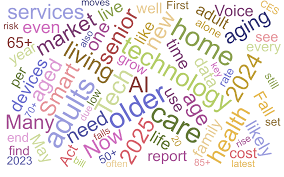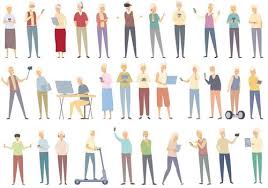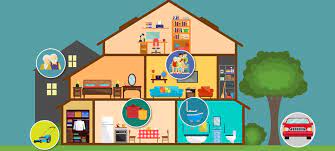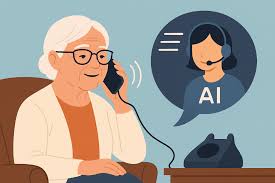The growing ecosystem of devices and products serving peoples’ health and well-being shows us that innovators already see the opportunity to serve the fast-growing market for self-care among people 50 years of age and up.
For nearly twenty years, one thing has felt inevitable: when boomers reach “old age,” senior living demand will surge. And yet ..
ChatGPT Health builds on consumer use of today's ChatGPT so responses are informed by your health information and context.
The prize honors .lumen’s Glasses for the Blind, an AI-based device that applies autonomous driving technology adapted for pedestrians. Using computer vision and local processing, the headset understands the three-dimensional environment in real time without relying on the internet or pre-defined maps and guides the user through subtle vibrations indicating a safe direction to follow.
The United States faces a fundamental mismatch between surging demand and insufficient capacity.

 CES is overwhelming – and it would be impossible to see all of these in person. But looking through the best-of lists and the award winners in various categories (including the
CES is overwhelming – and it would be impossible to see all of these in person. But looking through the best-of lists and the award winners in various categories (including the  The B
The B Tech users today span all ages. Published at around the same time as the
Tech users today span all ages. Published at around the same time as the  As they do each year since 2016, AARP surveys the 50+ about tech. AARP’s new
As they do each year since 2016, AARP surveys the 50+ about tech. AARP’s new  January 2026 marks a notable milestone for senior care. In a few weeks, the oldest baby boomers begin to turn 80-- with a
January 2026 marks a notable milestone for senior care. In a few weeks, the oldest baby boomers begin to turn 80-- with a  We all just want more effective help online. We want information, we need suggestions, even helping us with tasks by doing the work for us. Oh, and we would even like the advice to be timely and accurate! Over the past few years, as people were exploring
We all just want more effective help online. We want information, we need suggestions, even helping us with tasks by doing the work for us. Oh, and we would even like the advice to be timely and accurate! Over the past few years, as people were exploring  cusp of the utility of AI agents. Ironically, or maybe not so much, that improvement is inversely proportional to the diminished availability of people to solve our problems. We see bits and pieces of the decline of people in processes we need. Whether it is the sign-in kiosk in the healthcare waiting room, the check-in process at the airport, automated creation of pharmacy refill requests, or the customer service ‘interface’ that is now nearly all AI. And screaming ‘agent’ may still not bring the actual person to the phone. What’s positive and likely? [Information is drawn from interviews about “The Future of AI and Older Adults 2030.” Scheduled to be published in early January 2026]
cusp of the utility of AI agents. Ironically, or maybe not so much, that improvement is inversely proportional to the diminished availability of people to solve our problems. We see bits and pieces of the decline of people in processes we need. Whether it is the sign-in kiosk in the healthcare waiting room, the check-in process at the airport, automated creation of pharmacy refill requests, or the customer service ‘interface’ that is now nearly all AI. And screaming ‘agent’ may still not bring the actual person to the phone. What’s positive and likely? [Information is drawn from interviews about “The Future of AI and Older Adults 2030.” Scheduled to be published in early January 2026] January 2026 is just around the corner. And so will begin the wave of
January 2026 is just around the corner. And so will begin the wave of  Aging in place makes the senior living industry anxious. A new article from
Aging in place makes the senior living industry anxious. A new article from  As interviews begin, ideas for the future of AI and older adults are emerging. For the updated report,
As interviews begin, ideas for the future of AI and older adults are emerging. For the updated report,